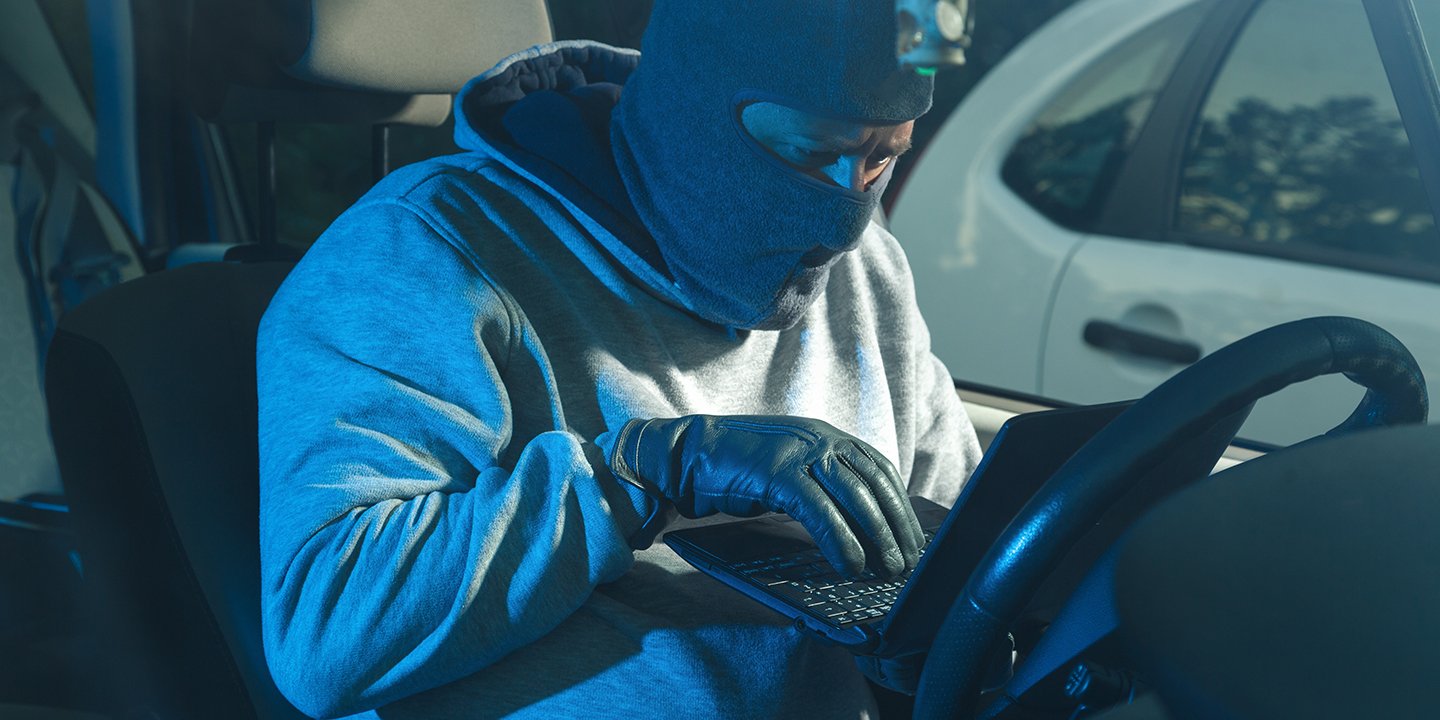Combatting high-tech auto theft
Technology and AIArticleNovember 19, 2024
Dealerships and consumers can take steps to help protect their vehicles amid rising motor vehicle thefts.
Here’s the good news: over most of the last 32 years, motor vehicle theft in the U.S. has dropped significantly, falling from a record 1,661,700 stolen vehicles in 1991 to a low of 693,663 in 2014.1
The bad news is that since 2019, we’ve been trending in the wrong direction — in a big way. In 2022, motor vehicle theft crept above one million for the first time since 20082 and last year the theft rate went up another percentage point with 1,020,729 vehicles stolen.3
One major factor behind this rise in car theft is that criminals have become more technologically savvy in bypassing current security systems.
“From keyless entry hacks to relay attacks on key fobs, perpetrators are exploiting vulnerabilities in modern vehicle security measures with alarming success rates,” explained David Glawe, President and CEO of the National Insurance Crime Bureau (NICB). “It is critical that industry and law enforcement work together to develop more effective strategies for combating auto theft and safeguarding public safety.”4
Corrupting convenience: How auto thieves exploit technology
The convenience drivers have enjoyed with advances like keyless entry and ignition have also provided paths thieves can use to get access to vehicles. The “relay attacks” mentioned by Glawe above involve two criminals working in tandem, using devices that pick up the key fob signal from inside a building, and then amplify it. One thief stands next to a building with a device that grabs a key fob signal from inside. That signal is amplified and then relayed to the second thief, standing by the vehicle’s car door with another device. The vehicle “thinks” the key fob is there, so the door can be opened, and the ignition activated.
It doesn’t necessarily require two people to exploit key fob vulnerabilities, either. “Code-grabbing” is a similar crime, usually committed in a parking lot when the driver uses the key fob to lock the door from the outside. Headlights flash to signal the connection, which also signals thieves who use devices to intercept the radio frequency from the fob and copy the code. Then they can use their own, reprogrammable fob to gain entrance.
As many “smash and grab” car thefts have shown, crooks don’t need an easy entrance to steal a vehicle; they just need to be able to start it. To that end, they exploit vulnerabilities in On-Board Diagnostics (OBD) ports to access vehicle ignition systems. They use force to break windows and enter the vehicle to link up with the OBD port, then connect a professional grade programming tool to the port and “program” a new key fob. Tools and key fobs are readily available on the internet or can be stolen from legitimate users like locksmiths or auto service facilities. Once the new fob is programmed, the thieves fire up the engine and drive off with their prize.
There is another discomforting trend of modern auto theft: a brazenness of criminals sharing theft tips via social media — the allure of “going viral” apparently overcoming any fear of getting caught. While manufacturers have responded to this trend with upgraded anti-theft software, undoubtedly thieves will seek ways to get around those enhancements. For dealerships, additional facility security is an essential investment to combat this ever-present threat.
What can you do to help prevent high-tech auto theft?
For dealerships, a layered security strategy can remove many of the opportunities for criminals. This can include, but is not limited to:
- Equip all buildings with alarm systems monitored by a central station.
- Have onsite security, including off-duty law enforcement patrol/park onsite after hours.
- Sealing the lot perimeter using fencing, gates, blockers and natural terrain features like ditches and trees.
- Daily audits of end-of-shift key counts.
- Installing active video monitoring systems that include motion-activated cameras and are monitored 24/7.
- Store high-value and targeted inventory inside or in other protected areas.
- Use GPS asset tracking systems to alert dealership personnel whenever the vehicle moves and provide geo-fencing features.
Dealerships and consumers can both take these security steps:
- Lock the doors and remove the keys.
- Install an OBD lock to prevent thieves from accessing the port.
- Use a steering wheel lock as a deterrent.
- Install an immobilizer or other aftermarket anti-theft system.
- Install aftermarket alarm systems in addition to the OEM product.
- Implement rolling codes and encryption to prevent key fob cloning.
- Store keys in Faraday bags or sealed metal containers to block key fobs from transmitting codes.
While manufacturers are working to address vulnerabilities in keyless systems, it’s incumbent on dealerships and vehicle owners to do everything they can to optimize security.
Dealerships should also consult with local law enforcement to determine which vehicles (or manufacturers) are being targeted in their region. If specific vehicles are being stolen, add an extra layer or two of security to those vehicles. Many cities have vehicle anti-theft task forces or similar units that may be a good source of information and can offer additional prevention.
Finally, while technology has created new opportunities for criminal acts, good security is focused on theft on all fronts, including theft of parts and components that doesn’t require tech savvy actions. As the ongoing plague of stolen catalytic converters proves, crooks with a set of power tools can do as much damage as code-cracking thieves.
